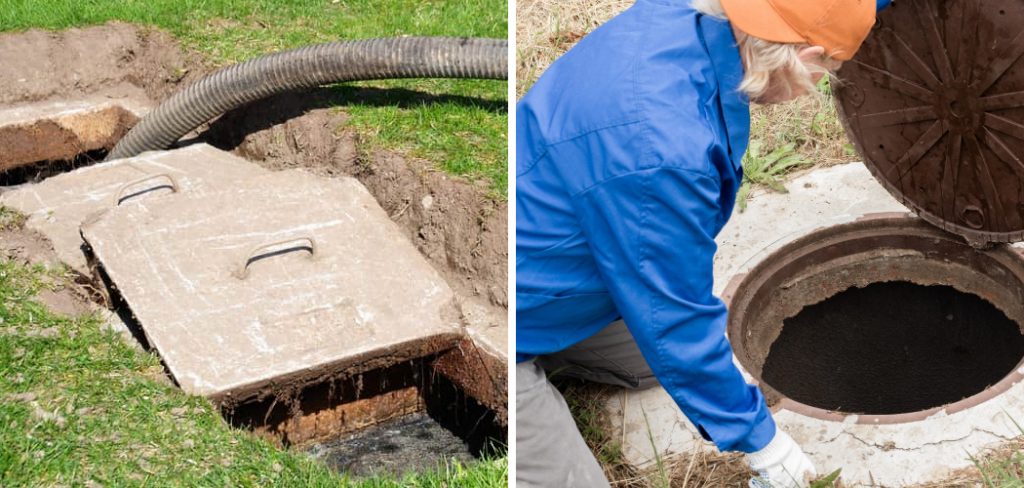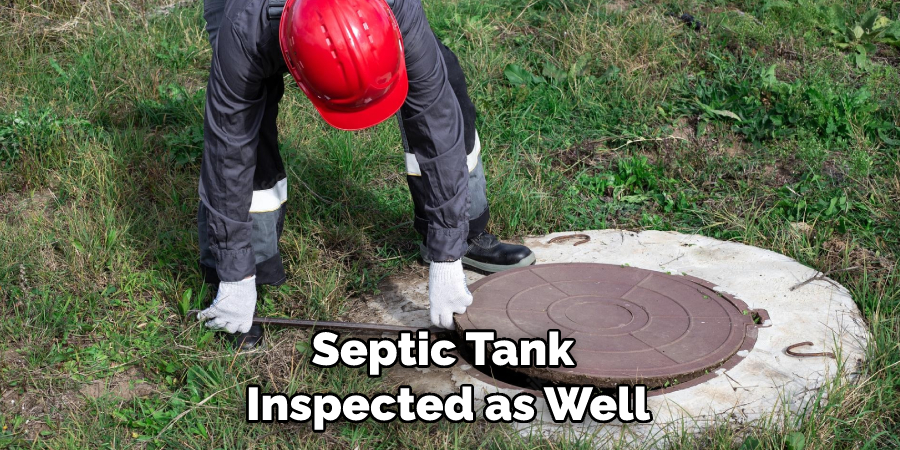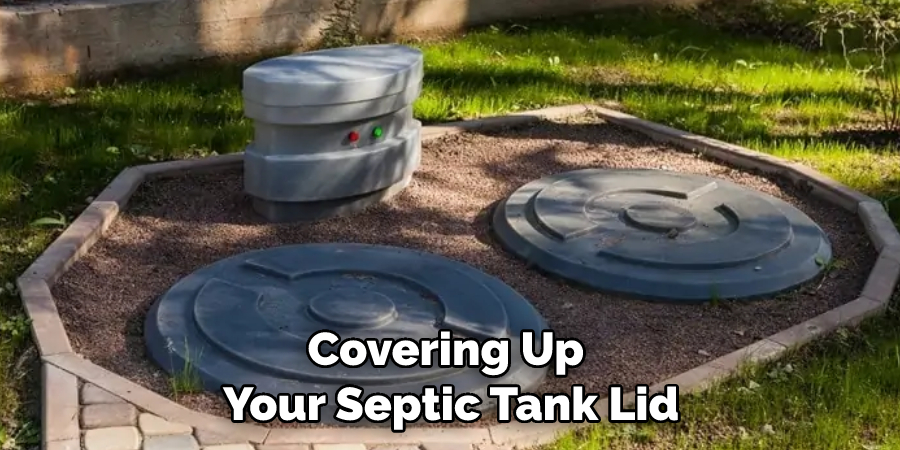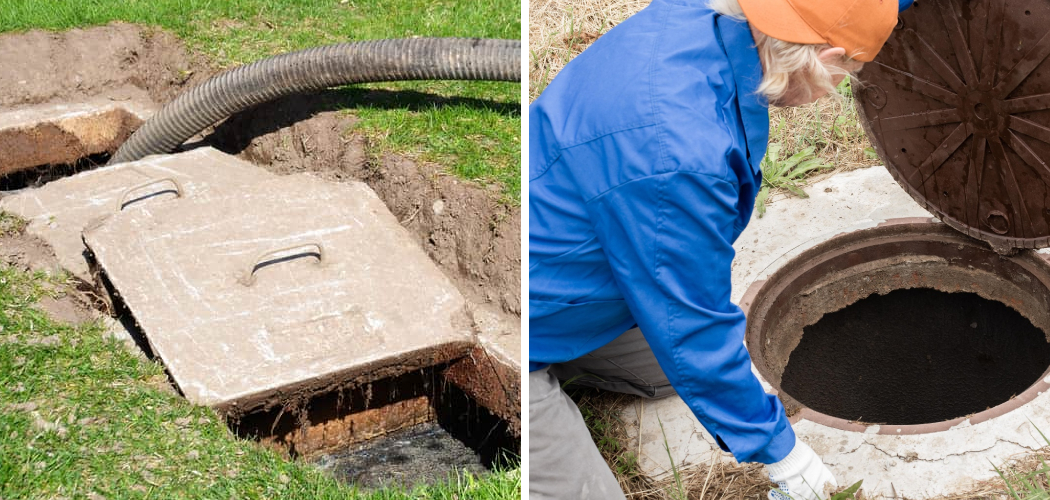If you’ve ever had to deal with a septic tank, then you know that the first step in any kind of repair or maintenance is locating your tank and the lid that covers it. But finding your septic tank lid can be much easier said than done, especially if it has been hidden away for years or simply not marked properly.

However, there are several ways to locate your septic tank lid before spending hours fruitlessly searching through your lawn. In this blog post, we will cover all of the tips and tricks on how to find my septic tank lid so you can get started on repairs right away!
Where Are Most Septic Tank Lids Located?
Most septic tanks are located in private areas of your property, such as the backyard or a side yard. The lid, which is typically round and metal, will be slightly above ground level and should be covered with a layer of soil or grass to protect it from the elements.
If you’re unsure of where your tank might be located, try to look for a raised mound in the ground or an area that has been recently disturbed. You might also see pipes or other components connected to your tank. If you still cannot locate your septic tank lid, don’t worry. There are other methods you can try!
10 Methods How to Find My Septic Tank Lid:
1. Look for a Metal or Concrete Lid in Your Yard:
Septic tank lids are typically round in shape and made of either metal or concrete. Look for a raised circular area or an area with disturbed soil or grass. This could be a sign of your septic tank lid being buried beneath the ground. If you are unable to locate the lid, you may need to enlist the help of a professional septic tank service. Though, if you are able to locate the lid, it is best practice to have a professional check it for any potential damage or corrosion.
2. Follow the Sewer Line from Your House to the Tank:
Your septic tank should be connected to the sewer line from your house. Look for a pipe or valve box outside the house, then trace the pipe toward your yard. This should lead you to the location of your tank and lid.
However, depending on the age of your system, you may not have a valve box or pipe leading to the tank. If this is the case and you are still unable to locate your tank, you may need to contact a professional.

3. Look for a Manhole Cover in Your Yard:
A manhole cover is a large metal plate located in the ground. It’s usually found near your septic tank and typically labeled with the company’s name or logo. If you find a manhole cover in your yard, it’s important to inspect it for any signs of damage or wear. Manholes are prone to rust and corrosion, so if there are any loose screws or holes in the cover, it could be a sign that something is wrong.
If you find any signs of damage, contact the company that installed it or a professional to inspect and repair it. It’s also important to make sure the manhole cover is tightly secured in its place. A loose or missing manhole cover can create a serious safety hazard for you and your family, so it’s important to make sure it’s in good condition.
4. Check for a Rusty Metal Plate in Your Yard:
Some septic tank lids are made of metal plates and can be quite rusted after a few years. Look for a rusty metal plate in your yard that may be covering your tank and lid. If you find one, you’ll need to get it replaced with a sturdy lid that can keep your tank secure from intruders.
Make sure to contact a professional to help you with this task. Although a rusty metal plate might not indicate a problem with your septic tank, it’s always best to replace it with something more secure.
5. Call Your Local Sanitation Authority:

Your local sanitation authority should have a record of the location of your septic tank lid. Call them up and ask for assistance in finding it. They may be able to provide a map of the area that shows the location of your septic tank lid. Additionally, they should be able to tell you if the lid is in good condition or if it needs to be replaced.
Keep in mind that some local authorities may charge a fee for this service. Be sure to check with your local sanitation authority for details. Make sure to ask how often you need to have your septic tank inspected as well. Following these steps will help ensure that your septic system continues to function properly.
6. Hire a Professional:
If you’re still having trouble finding your septic tank lid, consider hiring a professional. A plumbing expert should be able to quickly locate your tank and lid. They may use a sewer camera to inspect the tank and surrounding area, helping them narrow down the search.
If you’re not sure, who to hire, check with local businesses or search online for a reputable septic tank service in your area. Make sure the business is properly licensed and insured to protect you and your property. Hiring a professional can be costly, but it is often well worth the investment. By having a professional locate and open your septic tank lid, you can save time, money, and headaches.
7. Check the Topography of Your Yard:
Look for a low-lying area or depression in your yard. This could be a sign that the ground has been disturbed and is likely covering up your septic tank lid. While you may not be able to spot the tank itself, an experienced septic technician should be able to find it using a metal detector.
If the soil around the area is soft or you detect a foul odor, it could be an indication of a leak. In this case, contact a professional for further diagnosis and repair. Try to avoid doing any earth-moving projects near the tank to prevent further damage.

8. Look for Exposed Pipes:
If you’re still having trouble locating your septic tank lid, look for exposed pipes leading away from your house. These should lead you to the location of the tank and the lid. If the pipes are buried, you may need to use a shovel or other digging tool to unearth them. Once exposed, these pipes can provide crucial information about the septic tank and help you locate its lid.
9. Use an Underground Utility Locator Tool:
Using an underground utility locator tool is one of the most effective ways to locate your septic tank and its lid. Just enter your address into the tool, and it will provide you with all the information you need to find it quickly and easily.
However, it is important to remember that the accuracy of this tool depends on the information available, so be sure to double-check your results. You should also pay close attention to the markings and flags on your property that may indicate where the tank is located. This can help you narrow down your search area. In addition, if you need extra help, most underground utility locator tools offer customer service or even a live chat option.
10. Check Utility Maps:
Utility maps are often available online or through your local sanitation department. These maps can provide you with the exact location of your septic tank and its lid. However, sometimes the maps are outdated, so it is important to double-check with your local sanitation department or a licensed plumber for an accurate location.
Knowing the exact location of your septic tank lid is essential for proper maintenance. If you are considering making any modifications or additions to your property, it is important to check with the utility map first, as this can help you avoid any potential conflicts. Having an accurate location of your septic tank is also beneficial if you ever need to have it serviced.
Follow these tips and tricks to easily locate your septic tank lid so you can get started on repairs right away! With a little bit of effort, you should be able to find it quickly and save yourself from hours of searching in vain.

Conclusion
If you need help finding or accessing your septic tank, be sure to reach out to a professional. They will have the knowledge and equipment needed to safely locate and maintain your septic system. With their help, you can keep your home’s wastewater system running smoothly for years to come.
We hope this guide on how to find my septic tank lid was helpful. Please share it with your friends on social media if you find it useful. And be sure to check back here soon for more informative guides like this one.

